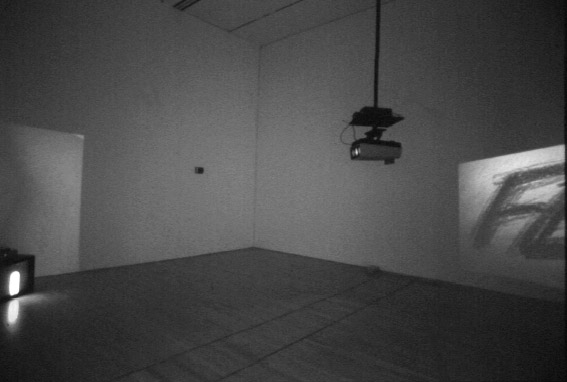
Vito Acconci, Pornography in the Classroom, 1975. Source: http://cool.conservation-us.org/jaic/articles/jaic40-03-005.html
The research project seeks to investigate the typology of aesthetic spatial structures (i.e. the dispositif), as well as the transfer processes of analog to digital still images in modern and contemporary art. Like film still images, slides in installations for instance, have defined “ways of seeing” by structuring time, using strategies of mise-en-scène, mediating narrations, and linking different acoustic, visual and spatial aesthetic experiences. However, neither in art history nor in film or media theory has the image transfer from object to analog to digital reproduction nor the structure of such spatial and ephemeral use of images in art installations been investigated as a principle of current new media experiences (i.e. in computer interfaces such as desktops, mobile phones, tablets).
The first, more extensive part of this research project proposes to safeguard a medium of art by means of field analyses that has not to date been sufficiently researched, to critically analyze this modular “loose” analog media before its digital transfer and to introduce it as a paradigm of today’s image thinking in the digital world. This research is accompanied by a historical investigation into the different fields of art historical methodology (such as the media transfer from object to image to reproduction in its analog and digital dispositifs, the image-text relationships in the sense of Heinrich Wölfflin’s “school of vision”, the study of the sources of text and images as an art history of documentation, the analysis of transcultural networks and artistic processes or the analysis and reconstruction of ephemeral spatial works of art) and their new counterparts in the digital world.
The second, practical part seeks to use the outcome of this analysis, as well as insights of digital curating, online art projects, and research exhibitions, for a new and impetus-giving critical revision on how such “historical” images and their spatial appearances can be adequately documented and digitally mediated.
The research project seeks to critically contribute to today’s discourse on digital art history and “big data”, and raises questions on the practicality of digital research methods for the discipline and the teaching of art history. The project is intended to build on and benefit from the applicant’s previous work on the slide as an art historical image medium, and the field of tension between various forms of documentation and historicization of environments in the 1970s. The results of the project leader’s research would be a monograph accompanied by workshops, conferences, and an exemplary online documentation presenting key works by selected artists.